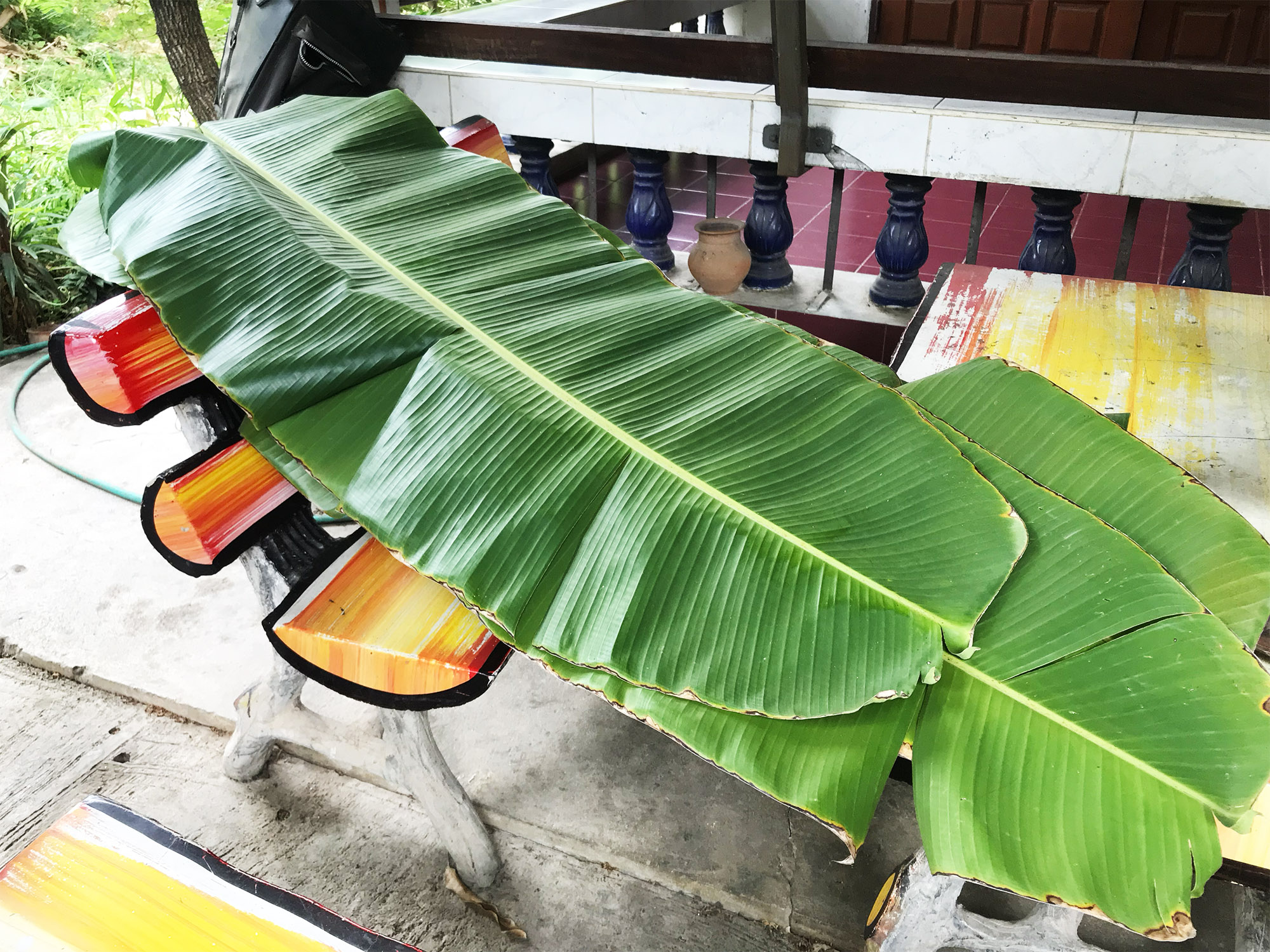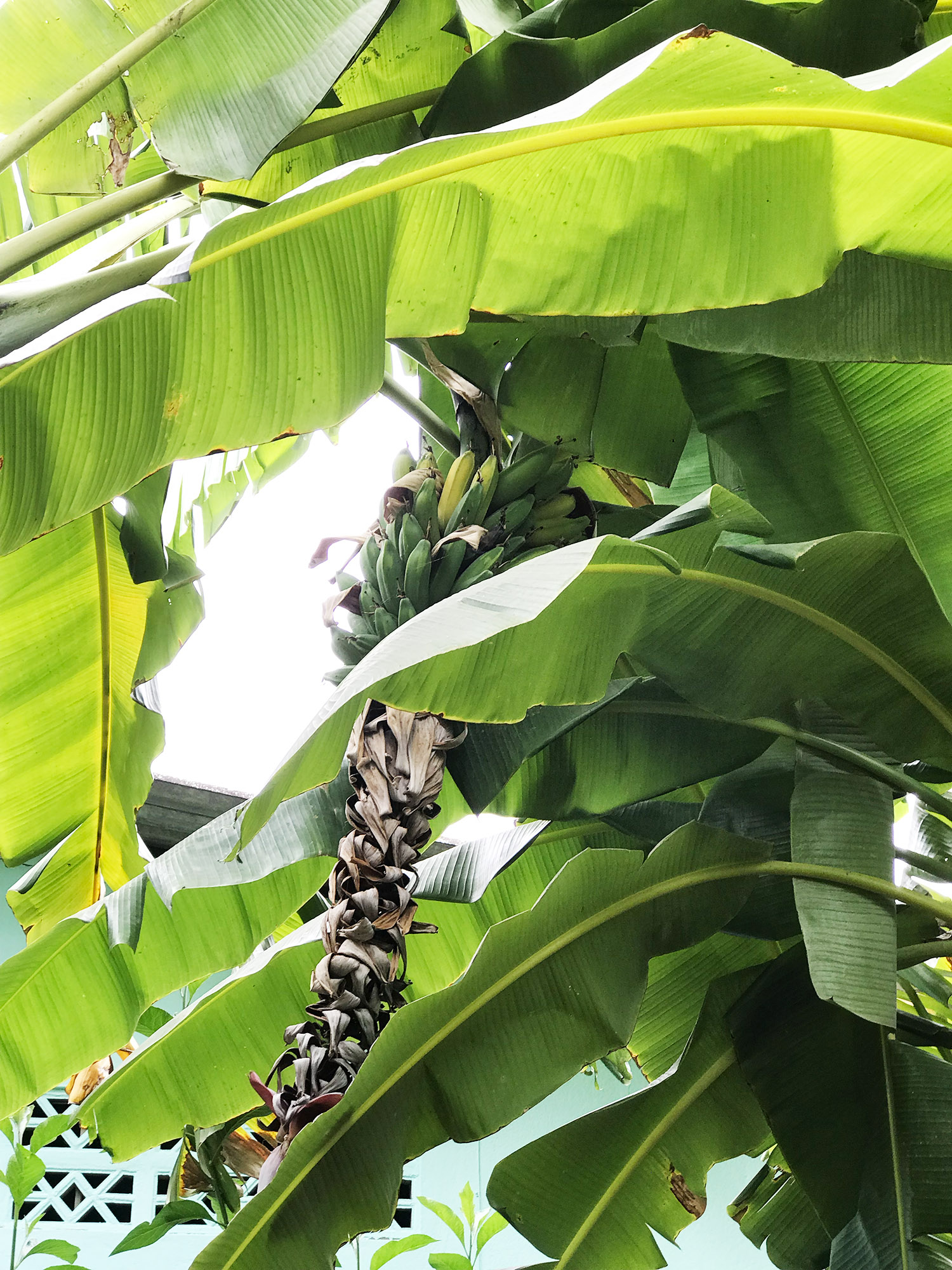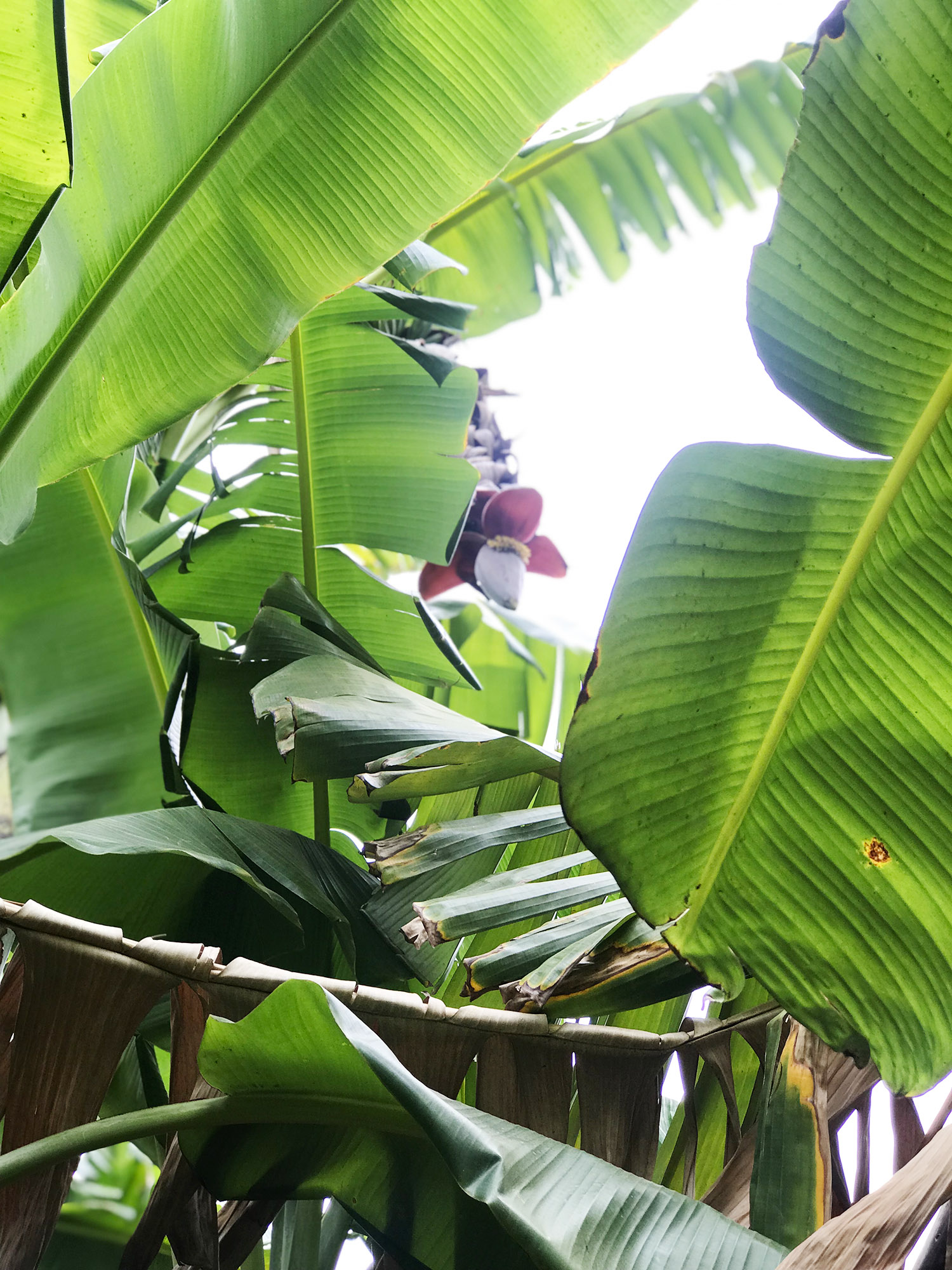BIG SALE - Up to 50% off food & beverage items - Free shipping on orders over $65
How to prepare banana leaves for cooking

Banana leaves are a versatile and traditional cooking tool in many cuisines, particularly in Asia, Latin America, and Africa. They are used for wrapping, cooking, and serving food, offering a unique flavor and presentation. While they add a nice, grassy aroma to the food cooked or served in them, the banana leaves are not typically eaten themselves.
Banana palms (and banana leaves) are abundant in Mae Sot, and at Tea Garden restaurant at Borderline Collective, the banana leaves are often used for cooking. However, before you can start cooking with banana leaves, they need some prepping, to turn them into soft, pliable sheets to wrap your food in.
How to prepare banana leaves for cooking
Begin by rinsing the banana leaf under cool running water to remove any dirt or debris. Since the leaves can be quite large, you might need to do this outside or in a large sink.
Use a pair of scissors to trim off the hard stem and any damaged or discolored edges of the leaf. If your recipe requires specific sizes or shapes, you can cut the leaves accordingly with scissors or a sharp knife, though it’s easier to do that after prepping.
Banana leaves are naturally stiff and can crack if bent when cold. To make the leaf more pliable, gently heat it over a gas stove, for a few seconds on each side. The leaf will change color to a brighter green and become softer. Be careful not to burn the leaf (and your fingers!). If you don’t have a gas stove, you can also place the leaves in a preheated oven for a few minutes until the leaves are soft and pliable.
The heat will draw out some moisture from the leaf, so after softening, pat the leaf dry with a clean towel or let it air dry for a few minutes.
You can wrap fish, chicken, pork, or beef in banana leaves with various seasonings and steam, grill, or bake them. The leaves keep the meat juicy and infuse a delicate, herbaceous flavor. If wrapping food, secure the packets with kitchen twine or toothpicks.
If you’re not going to use the leaves right away, store them in the refrigerator wrapped in plastic wrap or in a large zip-top bag. They can also be frozen for longer storage.
Recipe: Burmese banana wraps >>



Welcome to Mitzie Mee, a website about food, travel, and New York City
Latest Posts
Mitzie Mee - Sanne
Welcome to Mitzie Mee, my blog about food, travel, and everything New York City. I mostly blog about recipes, food, and restaurants, but you will also see posts about nightlife, things to see and places to stay around the world. Your feedback means a lot to me, so please don't hesitate to reach out with questions or comments :)
-
Vietnamese Egg Coffee (cà phê trứng) is a delicious combo of strong coffee topped with a light, fluffy cream made from whipped egg yolks and sweetened condensed milk. The drink …
-
I arrived in Bangkok late, and by the time I made it into the city and checked into my hotel, dinner time had long passed. My hotel was on a …
-
Last time I was in Tokyo, I stayed at Akiba Bay Hotel, which is a new capsule hotel, just a short walk from Akihabara Station. You are not allowed to …
-
// Sponsored post – In collaboration with Riva Arun // If you’re looking for a quiet, beautiful place to stay right by the water in Bangkok, you’ll love Riva Arun. …
-
Steve and I were in Paris earlier this month and ate our way through the city, one delicious meal at a time. Honestly, I don’t think I’ve ever had a …
-
Right around the corner from where we stayed in Paris, we found this tiny oyster bar called Opium La Cabane. Fresh oysters were piled up on display in a chilled …
-
The Japanese ume-fruit is a kind of plum or apricot that is pickled with sea salt and eaten as a sour, salty snack, umeboshi. The first time I tried umeboshi …
-
Nearby the hotel in Hong Kong was a really nice cafe, Cross Cafe. I went there for breakfast and had a set menu with macaroni soup with ham (or spam), …
-
When I was visiting Ella in Korea, we went to Masan Fish Market, which is close to Ella’s old home. The market is a real foodie paradise, with so much …
-
Stavanger has an impressive restaurant scene, especially considering the city’s modest size, and K2 had been on my radar for a while. The restaurant holds a Michelin star and a …
-
Morro Jable is a quaint little beach town in the southernmost part of Fuerteventura. It is a popular place to stay for tourists, but it feels touristy in a completely …
-
(Disclaimer: I was invited to try some of the desserts at Matcha Cafe Maiko, but as always, opinions are my own.) Matcha Cafe Maiko is a cafe chain specializing in …
Advertisement:
Insurance for nomads
The SafetyWing Nomad Insurance is the first insurance product built specifically for nomads, by nomads. The insurance starts at only $56.28 per 4 weeks (ages 18-39, other ages available), making the SafetyWing Nomad Insurance one of the best insurance deals I have seen. Calculate your price here:
